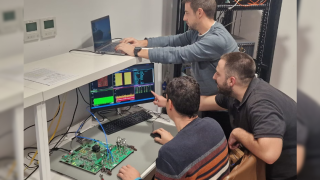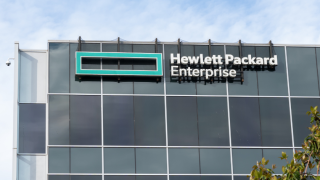Image quality, regardless of device, impacts the visual experience for everything consumers do, whether it’s watching a YouTube clip on their phones, Breaking Bad on their iPads or the latest blockbuster on their internet-enabled televisions. As operators, OTT players and vendors alike all look to create better end-user experiences, the latest upgrade in image quality cannot be overlooked.
While ultra-HD video is still far away from becoming a de facto standard, the technology is gathering momentum in trials and at conferences worldwide. Intelsat, and equipment providers Ericsson, Newtec and Sony, staged a live demonstration of 4K video at the CommunicAsia 2014 event in Singapore in June this year, proving that it can be done with existing infrastructure.
ADVA Optical Networking also trialled 4K video services at TNC2014 in May this year, in partnership with HEAnet, i2CAT and Eurotek.
“We have built an SDN controller that is capable of orchestrating end-to-end 4K video services over an advanced ROADM network using OpenNaaS as a service orchestration platform,” says Christoph Glingener, CTO, ADVA Optical Networking. “This is something that has never been done before.”
What does it mean for operators?
“Flexibility is key for tomorrow’s networks; it is a fundamental building block that could prove to be the deciding factor between success and failure,” says Glingener. “This is especially true for service providers that need to provision enormous amounts of streaming media – being able to rapidly respond to fluctuating bandwidth demand is vital.”
Analysts agree and Alan Breznick, cable and video practice leader at Light Reading, says that cable operators will need to prepare and upgrade their networks before being able to manage 4K video.
“It takes much more computational power to deliver 4K video streams,” says Breznick. “It will take 80 times more processing power to deliver ultra-high-definition (UHD) quality video; or, put another way, it will take 20 conventional video servers to deliver a single UHD video stream.”
However, Mark Wilson-Dunn, VP of global sales and marketing director for BT Media & Broadcast, believes that many networks today already have the capabilities to offer these UHD services.
BT was also involved in a trial of 4K video services earlier this year and Wilson-Dunn says that the company did not have to do anything to its network to support the 4K stream.
This is not to say that operators shouldn’t be prepared, but the companies wanted to prove that operators could support 4K services on their existing systems, without investing in major upgrades. Ken Takagi, director of managed services media at Intelsat, says the work to be done is largely on the terrestrial side in terms of headend (a facility for receiving television signals) and CPE (customer premise equipment).
“You have four times the pixels, twice the frame rate, and that’s not including the audio requirements,” Takagi says. “We need next-generation chipsets to come to market, because 4K requires more processing power than HD.”
And US-based chip-maker Qualcomm has been developing technologies to do just that. Keith Kressin, VP of product management at the company, says that its goal is to create chips with enhanced mobile connectivity, allowing consumers to shoot, process, store, play and wirelessly transmit 4K video.
He also envisions 4K video transfers over mobile networks, and Qualcomm’s chip has an integrated LTE modem with transfer speeds of up to 300Mbps, that can aggregate data transfers from three carriers.
Who is already supporting it?
In June this year, and in line with the FIFA World Cup, PCCW Global claimed to make television history with a live broadcast of 4K UHD in Hong Kong.
PCCW delivered an end-to-end managed media solution to Television Broadcasts (TVB) to enable the delivery of live, UHD quality World Cup coverage from Brazil to consumers in Hong Kong.
“PCCW Global’s wealth of experience and robust network will ensure that viewers benefit from consistently high-quality transmission, whilst TVB reaps the benefits of utilising an end-to-end solution delivered by just one vendor,” says Marc Halbfinger, CEO at PCCW Global ahead of the event.
Content was carried over a submarine fibre route using highly robust video encoding, decoding and gateway systems, with added resilience delivered via satellite.
PCCW Global also managed encoding, decoding and switching equipment involved in the international transmission, as well as on-site engineers to maintain the solution at both the Brazil and Hong Kong ends.
US vendor Cisco is also experimenting with 4K video services and earlier this year, revealed enhancements to its Videoscape AnyRes encoding solution, to support 4K/UHD content delivery.




